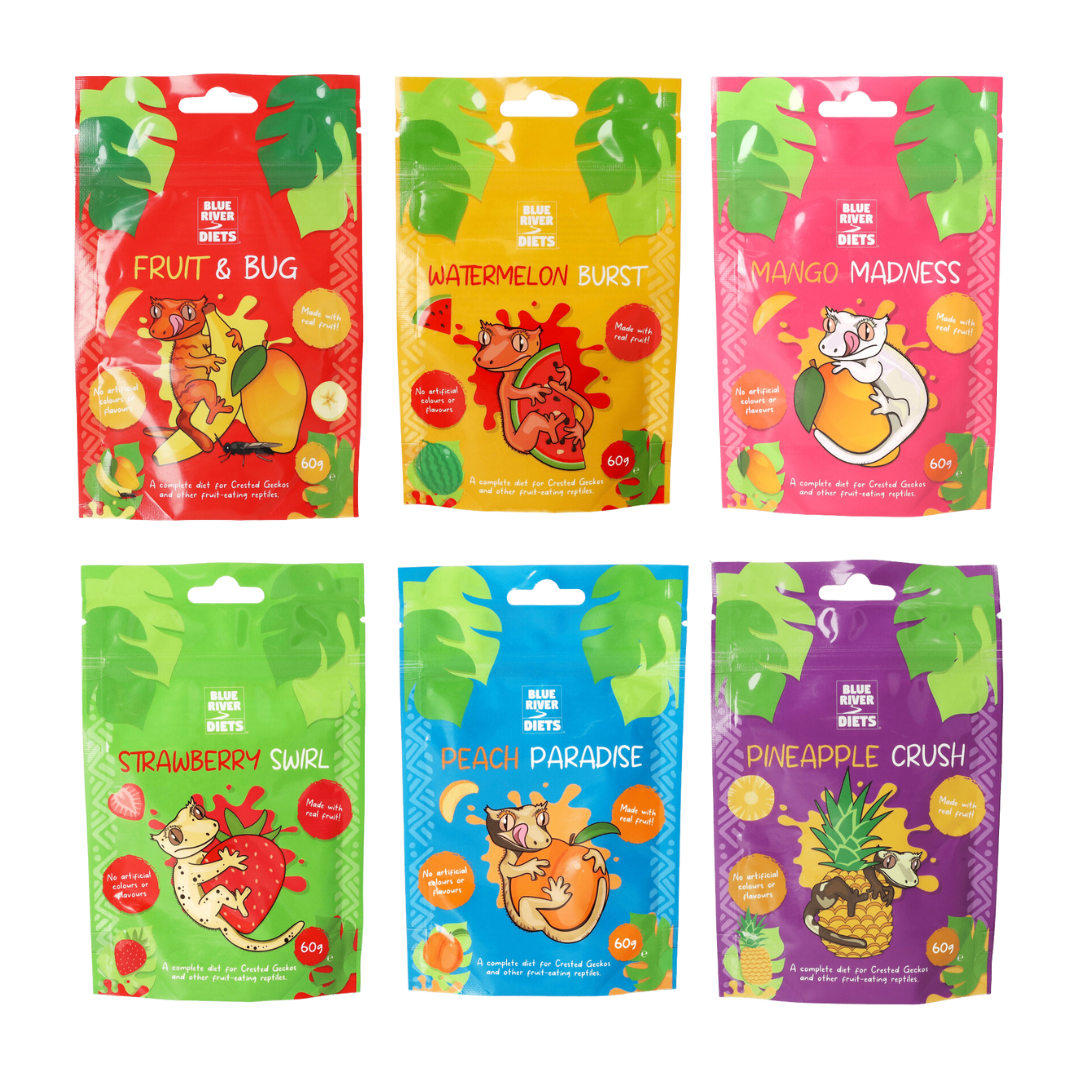
FAQs
Your questions - answered! Have a question that you don't see answered here? Reach out to us via our online chat or by email at support@blueriverdiets.com.
Collapsible content
Why are we named Blue River Diets?
The name Blue River refers to the Blue River Provincial Park where in 1994 crested geckos were rediscovered. The Crested Gecko was discovered first in 1866 and after this was thought to be extinct until 1994 when they were rediscovered on a herpetological expedition.
Blue River Park is situated on the southern part of New Caledonia’s main island Grand Terre and is one of only three locations that Crested Geckos can be found in the wild. The other two being just South of Mount Dzumac and a small island south of the main island named Ile de Pins or Isle of Pines.

Blue River Diets recently funded a research trip to Isle de Pins in conjunction with Exotics Keeper Magazine to help us better understand the needs of Crested Geckos in the wild and will be returning soon. This research is aiding us in developing our diets to make them exactly what your crested friend requires.
What is the recommended mixing ratio for Blue River Diets formulas?
We recommend a ratio of 1 part formula to 2 parts water.
How long is Blue River Diets stable for in a pouch, in an enclosure, and in the refrigerator?
Sealed: Unopened pouches will keep our formulas fresh for 18 months. Store in a cool, dark place until opened.
Note about Expiration Dates: Some customers have noticed that the expiration dates on our latest Blue River Diets shipment appear shorter than expected. Please rest assured, these dates are written in UK date format (day/month/year). For example, an expiration date listed as 1/9/2026 should be read as September 1, 2026, not January 9, 2026.
In an enclosure: Once the diet has been prepared with water, your geckos can enjoy our food for at least 24 hours in their enclosures. Depending on the temperature and humidity levels of the enclosure, you may keep the diet in for longer, but we recommend monitoring your cups for any signs of spoiling and changing the formula every 24 hours to ensure optimal freshness.
In a refrigerator: Prepared and leftover diet can be stored in a refrigerator once mixed for 7 days.
Which species was Blue River Diets especially formulated for?
Blue River Diets formulas have been specifically designed with Crested Geckos (Correlophusciliates) in mind. Other species of New Caledonian geckos, such as Mossy Geckos (Mniarogekkochahoua), Gargoyle geckos (Rhacodactylusauriculatus), and New Caledonian Giant Geckos (Rhacodactylusleachianus) have similar dietary needs, and will also enjoy our formulas and flavors.
Note: We recommend our Fruit & Bug formula for Leachianus, due to their need for ahigher protein intake. Other flavors can still be offered occasionally for variety.
Which other species can benefit from Blue River Diets?
Many Day gecko species enjoy all flavors of Blue River Diets when paired with the live insects they require to thrive. We have also had reports of Blue Tongue Skinks enjoying our diets as a tasty snack, and even feedback that our dry formula has worked well as an additional gut-load with feeder insects.
Even though Blue River Diets is a complete diet, should I still feed live food to my gecko?
The simple answer is yes. While Blue River Diets provide a nutritionally complete diet that offers everything your gecko needs to stay healthy and grow, live food should still be offered, as it provides more than just a meal.
Regularly offering live foods to your gecko encourages natural behaviour and provides mental stimulation. In the wild, crested geckos are opportunistic feeders, hunting live prey such as insects. Offering live food stimulates their natural hunting instincts and encourages physical activity, which can promote mental stimulation, prevent boredom, and improve their overall well-being in captivity.
In addition to the mental benefits, the physical advantages of offering live food should not be overlooked. Chasing and catching live insects gives crested geckos the opportunity to exercise, helping maintain healthy muscle tone and keeping them physically active. Although Blue River Diets are complete, feeding them exclusively without the addition of live foods can result in your gecko becoming sedentary and lazy, which in turn could lead to obesity.
While Blue River Diets are formulated to meet the nutritional needs of crested geckos, offering insects such as locusts, crickets, cockroaches, or mealworms can provide additional protein, fat, and other micronutrients — which is always beneficial.
As the saying goes, variety is the spice of life. Including both Blue River Diets and live insects helps mimic your gecko's natural feeding habits, ensuring they receive a wide range of nutrients. This also prevents dietary monotony, which could lead to picky eating or reduced interest in food over time.
Whenever you offer live insects to your geckos, we recommend that these insects are gut-loaded at least 24 hours before feeding. Gut loading is the process of feeding the insects a quality formula to fill their gut with essential nutrients, such as calcium and protein — similar to what geckos would gain from consuming wild prey. This ensures your gecko receives the highest quality insects possible. Rember that for insect eating reptiles it’s not “you are what you eat”, it’s “you are what your insects eat”.
In summary, offering live food alongside Blue River Diets ensures your crested gecko stays physically active, mentally stimulated, and nutritionally satisfied. This promotes a healthier and more balanced lifestyle, while most importantly allowing your gecko to behave as it would in its natural habitat.
Is Blue River Diets balanced for breeding and egg-laying females?
Our diets support crested geckos of all life stages, including gravid and egg-laying females. Regardless of formula or brand, if your geckos are breeding, special consideration should be given before breeding and after laying to ensure that their weights and calcium sacs are healthy.
What research went into creating Blue River Diets?
Blue River Diets was created through working with a long-established manufacture of reptile foods, as well as the extensive knowledge of industry professionals, such as feedback from our team of researchers in New Caledonia, reptile hobbyists, experienced gecko breeders, and the knowledge of the PeregrineLivefoods team. The diet has also been tested on breeding groups at our UK-based facility.
Why have we added Potassium Sorbate?
When initially creating Blue River Diets we made the decision to exclude preservatives to attempt to keep the diet as natural as we could. After launch, the gecko keeping community voiced that it was important for them to be able to leave food in their enclosures for over 24 hours. Although this is still not something that we recommend we listened and took steps to ensure those that would like to do so can do it with added piece of mind.
Potassium sorbate is the potassium salt of sorbic acid, which occurs naturally in some fruits, particularly the berries of the rowan tree (Sorbus aucuparia). While sorbic acid itself is a natural compound, potassium sorbate is typically manufactured through chemical processes for commercial use.
Although potassium sorbate is synthetically produced, it is often considered a "nature-identical" compound. This means that the potassium sorbate used in our diets has the same chemical structure as sorbic acid found in nature, despite being synthesized in a lab. It is widely accepted for use in natural and organic products because of its non-toxic nature and close relation to a naturally found compound. This and the reasons below helped us to the realisation that potassium sorbate was the correct preservative for our diets.
Prevents Spoilage:
Potassium sorbate inhibits the growth of mould, yeast, and some bacteria, extending the shelf life of crested gecko MRP. This is particularly important for a powder-based product that may be exposed to moisture when mixed with water, as it prevents the growth of harmful microbes that could spoil the food or cause health issues in geckos.
Maintains Nutritional Quality:
By preventing microbial growth, potassium sorbate helps maintain the nutritional integrity of our diets. Without it, the product could degrade over time, losing valuable nutrients and possibly becoming unsafe to consume. This ensures that the MRP provides consistent nutrition throughout its shelf life.
Safe and Effective at Low Concentrations:
Potassium sorbate is effective in very low concentrations, which means it can be added to crested gecko diets without impacting the taste, smell, or texture of the food. It’s considered safe for reptiles, providing effective preservation without harming the gecko.
Non-Toxic and Safe:
Potassium sorbate is widely regarded as a non-toxic and safe preservative for use in human and animal food products. It is metabolized by animals into harmless compounds (water and carbon dioxide), and its long history of use in the food industry supports its safety profile.
Helps Avoid Artificial Flavors or Colours:
Since potassium sorbate helps keep the product fresh and mould-free, it allows us to avoid using additional artificial preservatives or additives. This aids us in our goal of providing a natural, healthy diet for crested geckos that don't rely on artificial colours or flavours.
Stable in Powder Form:
Potassium sorbate remains stable in powder-based diets, such as our diets, making it a practical choice for use in products that will be stored for long periods. This ensures that the preservative remains effective in our diets even in its dry, packaged form.
Why did we choose soya protein for our diets?
When creating Blue River Diets, each key ingredient was carefully considered. When selecting a protein source, we had many options available. After thorough research, we believe that soya protein isolate is the best choice for building a natural and complete diet for Crested Geckos. Below are the key reasons that led us to this decision and why we believe it to be a superior protein source:
Complete Protein: Soya protein isolate is a complete protein, meaning it contains all nine essential amino acids that are vital for growth, repair, and overall health. These amino acids are essential for crested geckos, particularly for tissue development, muscle maintenance, and other physiological functions. This makes it superior to many other plant-based proteins, which may lack one or more essential amino acids.
High Protein Content: Soya protein isolate is highly concentrated, containing about 90% protein. This makes it a rich source of protein without the added calories or fats that can accompany other protein sources. Compared to whole soybeans or other plant proteins, it offers more protein per gram, which is ideal for formulating nutrient-dense diets.
Easily Digestible: Soya protein isolate is processed to remove most of the carbohydrates, fats, and fiber found in whole soybeans, leaving behind a highly digestible protein. This is especially important for crested geckos, as it ensures they can efficiently absorb and utilize the protein for growth and maintenance without placing a burden on their digestive system.
Low in Fat: Unlike many animal-based proteins, soy protein isolate is very low in fat. This is beneficial for maintaining a lean diet in crested geckos, which can be prone to gaining excess weight if fed high-fat diets. It provides the necessary protein without contributing to obesity, which is critical for long-term health.
Sustainable and Environmentally Friendly: Soya protein is plant-based, making it more sustainable and environmentally friendly compared to animal-derived proteins. This makes it an attractive option for both manufacturers and consumers looking to reduce
the environmental impact of their dietary choices. Using soya protein isolate supports more eco-friendly production practices.
Supports Muscle Maintenance and Growth: With its high protein content and complete amino acid profile, soya protein isolate is particularly beneficial for supporting muscle development and maintenance. This is essential for crested geckos, especially during periods of growth or when recovering from injury or illness.
In summary, soya protein isolate is a superior protein source due to its high protein content, complete amino acid profile, low fat, and digestibility. It supports muscle growth, maintenance, and overall health in a lean, efficient manner. Its sustainability and neutral flavour further enhance its appeal, making it the ideal choice for our diets.
Why do we use inactive postbiotics (inactive Lactobacillus acidophilus) in our diets?
Inactive postbiotics represent a safe, stable, and effective means of enhancing gecko health through their food. Postbiotics are bioactive compounds produced during the fermentation process by probiotics (beneficial bacteria) in the gut. Unlike probiotics (live bacteria) and prebiotics (food for those bacteria), postbiotics are the metabolic byproducts of probiotic activity. These compounds can include short-chain fatty acids (SCFAs), enzymes, peptides, cell wall fragments, and metabolites which all play vital roles in the health of your gecko. The key functions they carry out in the gecko’s body are:
Boosting Immune Function
The gut is closely linked to the immune system, and maintaining its balance is key to a healthy immune response. Inactive postbiotics contain components like lipoteichoic acids and peptidoglycans, which can help modulate the immune system. These components stimulate the gecko’s immune defences without the risks that come with live probiotics, such as overgrowth or contamination. For geckos, this can lead to fewer infections and a stronger resistance to common illnesses.
Enhanced Digestive Health
Geckos, like other reptiles, can sometimes experience digestive issues, especially in captivity. Inactive postbiotics can help improve gut health by supporting the balance of beneficial bacteria in the digestive system. Even though the bacteria are no longer alive, the bioactive metabolites they produce—such as short-chain fatty acids, peptides, and enzymes—remain intact. These metabolites can promote a healthy gut environment, facilitating smoother digestion and nutrient absorption.
Enhancing Nutrient Absorption:
Postbiotics can enhance the absorption of important nutrients, such as calcium and magnesium, by influencing the permeability and transport mechanisms of the gut lining. This contributes to overall better mineral utilization by the body. This of course aids in guarding against such conditions as metabolic bone disease (MBD).
Improved Skin and Shedding
A healthy gut is often reflected in the external health of an animal, and geckos are no exception. Crested geckos will periodically shed their skin, a balanced gut microbiome can lead to healthier skin and fewer shedding complications. Postbiotics can improve nutrient absorption, ensuring that the gecko receives the vitamins and minerals needed for healthy skin and smoother, more efficient shedding.
Stress Reduction
Captive geckos can experience stress due to changes in their environment, improper handling, or during shedding. Stress can negatively affect the gut and overall health. By promoting gut homeostasis, inactive postbiotics may reduce the physiological impacts of stress, such as poor appetite or vulnerability to disease.
Safety and Stability
One of the key benefits of inactive postbiotics is that during the process of creating them known as tydallization all harmful and potentially pathogenic organisms in the postbiotics are killed off while retaining their beneficial effects. This makes inactive postbiotics safer than live probiotics, especially for reptiles with sensitive systems. Unlike live probiotics, which contain live bacteria, postbiotics are the beneficial byproducts of bacterial fermentation. These inactive compounds don’t pose the risk of introducing live bacteria into your gecko’s system, which can sometimes lead to digestive imbalance or harmful bacterial overgrowth. Additionally, postbiotics bypass the complexities of prebiotics, which require precise gut conditions to be effective. By offering inactive postbiotics, gecko diets can safely provide health benefits like immune support without the potential risks associated with live microorganisms.
Additionally, inactive postbiotics are shelf-stable, meaning they do not require refrigeration and have a longer lifespan. This makes it easier to incorporate them into gecko food without the risk of spoilage.
Reduction of Pathogenic Bacteria
In the wild, geckos are naturally exposed to a range of microorganisms, but in captivity, they are more susceptible to imbalances in their gut flora. Inactive postbiotics can help reduce the growth of harmful bacteria by promoting a more balanced gut environment. Some postbiotics have antimicrobial properties, which can actively suppress the growth of pathogens, reducing the likelihood of infections like salmonella or parasitic overgrowths that can be detrimental to gecko health.
Do you have an affiliate program?
Yes! Are you a content creator? Click here. Are you a breeder? Click here.
Do you have a wholesale program?
Learn more about our vendor program here!



